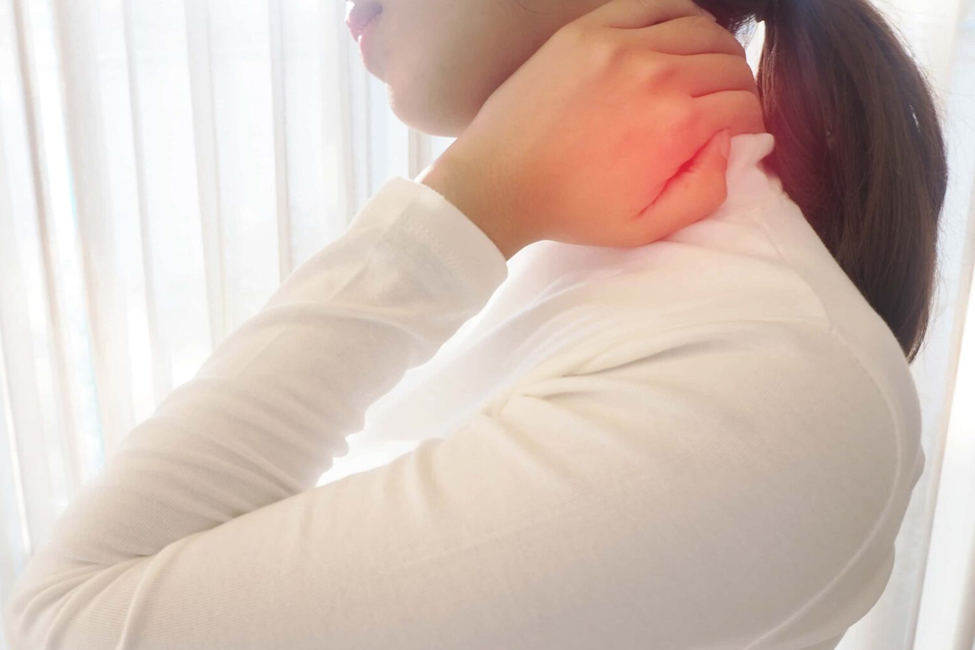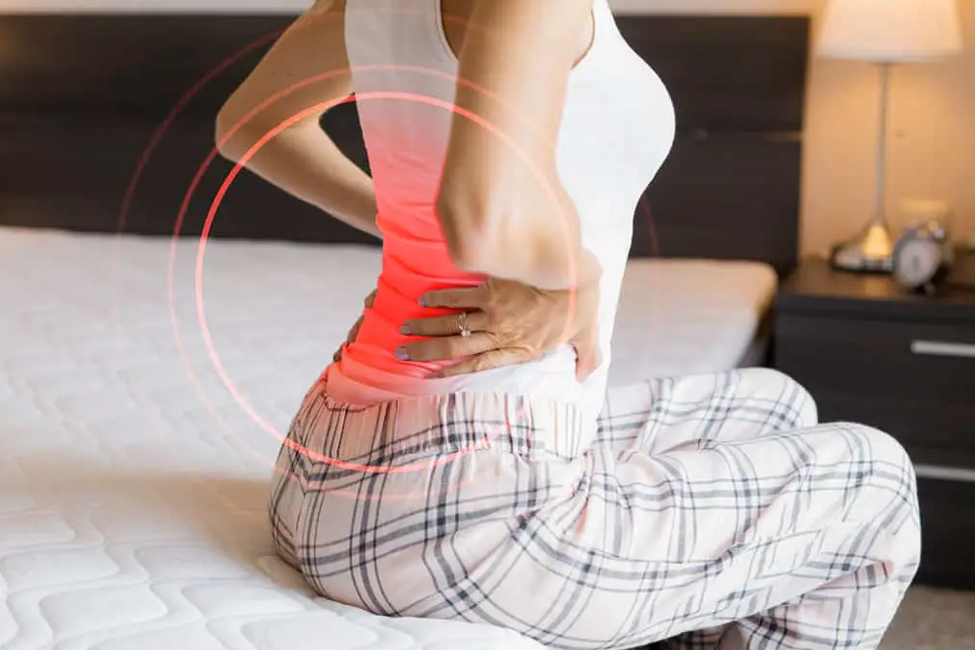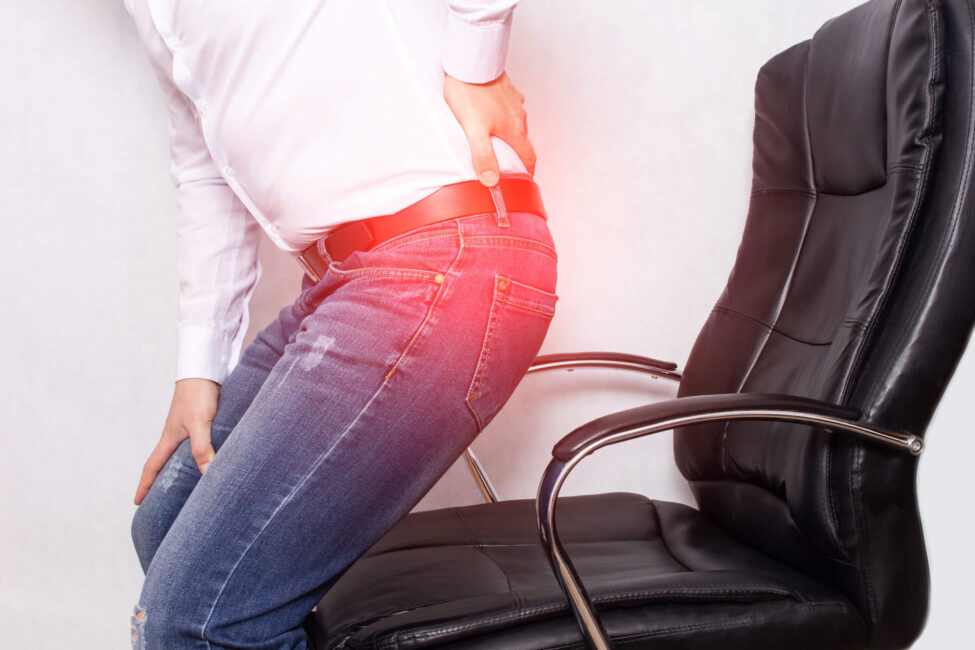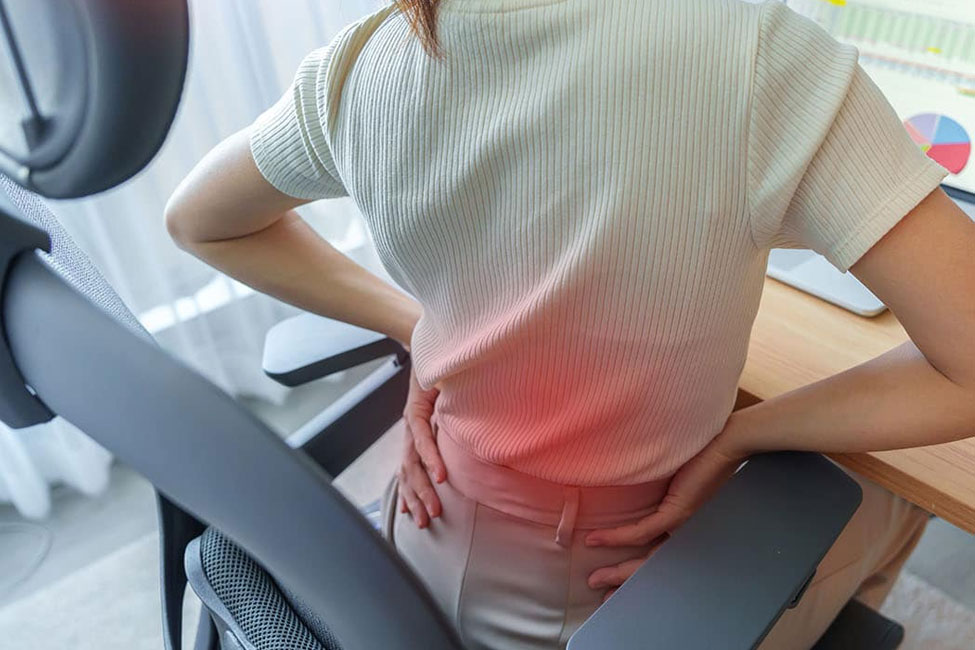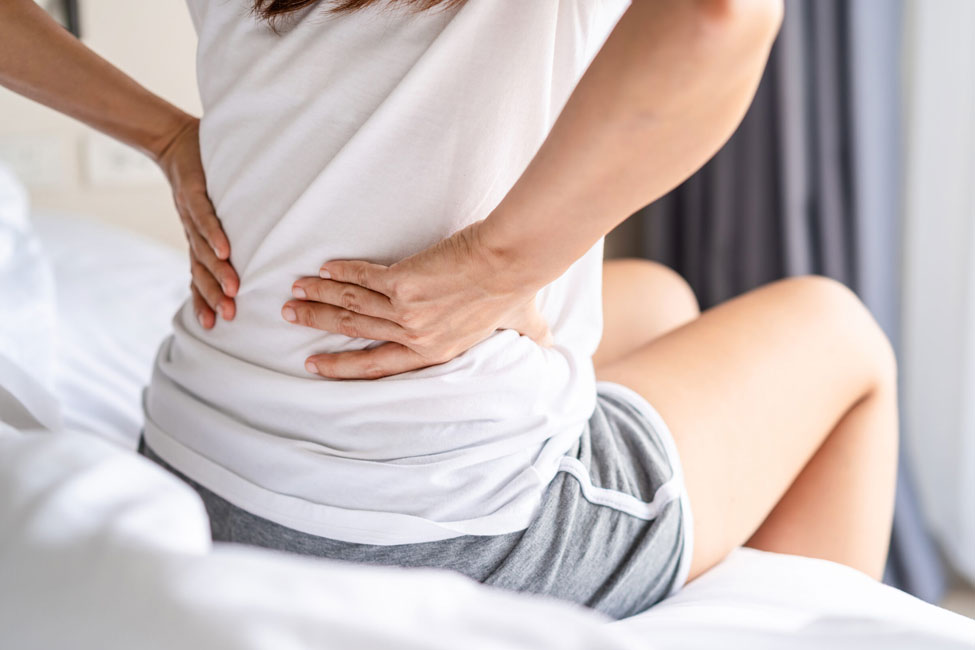Spondylosis: Causes, Symptoms, Treatment, and Prevention
What is Spondylosis?
Spondylosis is a term used to describe the natural wear and tear that occurs in the spine as we get older. It happens when the bones and discs in our back start to show signs of ageing, like small cracks and changes in shape.
Type of Spondylosis
- Cervical Spondylosis: This affects the neck area.
- Thoracic Spondylosis: This involves the middle part of the spine.
- Lumbar Spondylosis: It’s in the lower back area.
How Common is Spondylosis?
Spondylosis is quite common, especially as we age. As they grow older, most people will experience some degree of spondylosis. It’s a natural part of the ageing process, and while it can cause discomfort or pain, it’s not usually a serious condition.
Causes of Spondylosis
Spondylosis is a common part of ageing; not everyone with the following risk factors will develop the condition:
- Ageing: The primary cause of spondylosis is the natural ageing process. As we age, the discs in our spine become less hydrated and lose some of their cushioning ability, leading to wear and tear.
- Genetics: A family history of spondylosis can increase your risk. Some people may inherit a predisposition to developing this condition.
- Lifestyle Factors: Certain lifestyle choices, such as smoking and having a sedentary (inactive) lifestyle, can contribute to the development of spondylosis.
- Injury or Trauma: Previous injuries or trauma to the spine, such as accidents or falls, can accelerate the degeneration of spinal discs and joints.
- Repetitive Movements: Jobs or activities involving repetitive motions or heavy lifting may increase the risk of spondylosis, especially in the affected spine.
- Obesity: Excess body weight places additional stress on the spine, increasing the likelihood of spondylosis development.
- Dehydration: Inadequate water intake can reduce the hydration of spinal discs, making them more prone to degeneration.
Symptoms of Spondylosis
Symptoms of Spondylosis can vary depending on the location and severity of the condition. Common signs and symptoms may include:
- Neck or Back Pain: Persistent pain in the neck (cervical spondylosis), upper/middle back (thoracic spondylosis), or lower back (lumbar spondylosis) is a primary symptom. The pain can range from mild to severe.
- Stiffness: Stiffness in the affected area makes it difficult to move the spine or perform certain activities.
- Headaches: In the case of cervical spondylosis can lead to headaches, particularly in the back of the head.
- Radiating Pain: Pain may radiate into the arms (in cervical spondylosis) or into the legs (in lumbar spondylosis) due to pressure on nerves.
- Numbness and Tingling: Numbness, tingling, or a “pins and needles” sensation in the extremities, which can be related to nerve compression.
- Muscle Weakness: The weakness in the muscles, especially in the arms or legs, can impact mobility and coordination.
- Difficulty with Fine Motor Skills: Decreased fine motor skills and difficulty gripping objects in severe cases of cervical spondylosis.
- Loss of Bladder or Bowel Control: In rare and severe instances, spinal cord compression may lead to bladder or bowel control loss. This is a medical emergency.
- Grinding or Popping Sensation: Some individuals may experience a grinding or popping sensation when moving the spine due to disc and joint changes.
Diagnosis of Spondylosis
Diagnosing Spondylosis typically involves a combination of medical history, physical examination, and imaging tests. Here’s how it is typically diagnosed:
Medical History
Your orthopaedic specialist will begin by discussing your symptoms, medical history, and any risk factors that might be relevant, such as a history of spine-related problems or a family history of spondylosis.
Physical Examination
A physical examination will assess your range of motion, evaluate your spine’s flexibility, and check for any signs of muscle weakness or neurological issues.
Imaging Tests
X-rays: X-rays are commonly used to visualise the bones and alignment of the spine. They can reveal bone spurs, narrowing of the spinal canal, and changes in the vertebral structure.
MRI (Magnetic Resonance Imaging)
An MRI provides detailed images of the spine’s soft tissues, including discs, nerves, and ligaments. It can help identify nerve compression and the extent of damage.
CT (Computed Tomography) Scan
CT scans provide cross-sectional spine images and are useful for assessing bony changes and the spinal canal’s condition.
Myelogram
This involves injecting a contrast dye into the spinal canal before a CT scan or X-ray highlighting any spinal cord and nerve abnormalities.
Electromyography (EMG)
In some cases, an EMG may be performed to evaluate the electrical activity of muscles and nerves. This can help identify nerve compression or damage.
Neurological Examination
A neurological examination may be conducted to assess sensory function, reflexes, and muscle strength, especially if there are concerns about nerve involvement.
Discography
This is a diagnostic procedure where contrast dye is injected into the discs to identify the source of pain in the spine.
Complications of Spondylosis
Complications of Spondylosis are typically related to the compression of nerves or the spinal cord due to the degenerative changes in the spine. While spondylosis itself is a common part of ageing and often doesn’t lead to complications, in some cases, it can result in more serious issues. Here are potential complications:
- Radicular Pain: Spondylosis can lead to the compression of spinal nerves, causing radiating pain, numbness, or tingling in the extremities. This condition is known as radiculopathy.
- Cervical Myelopathy: In cervical spondylosis, the spinal cord may become compressed due to bone spurs or disc herniations. This can lead to a condition called cervical myelopathy, characterised by weakness, loss of coordination, and problems with fine motor skills.
- Lumbar Spinal Stenosis: In lumbar spondylosis, the narrowing of the spinal canal (spinal stenosis) can compress the spinal cord or nerves, leading to leg pain, numbness, and weakness. This can affect mobility and daily activities.
- Loss of Bladder or Bowel Control: Severe spinal cord compression, particularly in the cervical or thoracic spine, can result in a loss of bladder or bowel control. This is a medical emergency and requires immediate attention.
- Chronic Pain: Chronic and debilitating pain can significantly impact one’s quality of life and may lead to depression, anxiety, and reduced physical activity.
- Muscle Weakness and Atrophy: Prolonged compression of nerves can lead to muscle weakness and atrophy in the affected areas.
- Permanent Nerve Damage: In severe cases, untreated nerve compression can lead to permanent nerve damage, which may not be fully reversible.
Treatment Options for Spondylosis
Spondylosis treatment options aim to relieve pain, improve function, and prevent further degeneration of the spine. Treatment choice depends on the severity of symptoms and the condition’s location. Here are common approaches:
Physical Therapy
Physical therapy is often recommended to strengthen the muscles around the spine, improve flexibility, and enhance posture. Therapists can teach exercises and techniques to manage pain and prevent further issues.
Medications
- Nonsteroidal Anti-Inflammatory Drugs (NSAIDs): These can help reduce pain and inflammation.
- Muscle Relaxants: These may be prescribed to relieve muscle spasms.
- Pain Relievers: In some cases, stronger pain medications may be necessary.
- Corticosteroid Injections: These can reduce inflammation and provide short-term relief when injected directly into the affected area.
Lifestyle Modifications
- Maintaining proper posture, especially while sitting or standing.
- Weight management to reduce stress on the spine.
- Regular exercise to strengthen the core and back muscles.
- Ergonomic adjustments in the workplace or home.
Use of Assistive Devices
A cervical collar or lumbar support may help alleviate pain and promote proper spinal alignment.
Heat and Cold Therapy
Applying heat or cold packs can reduce pain and muscle tension.
Surgical Options
Surgery is usually considered if conservative treatments do not provide relief or if there is severe nerve compression. Common surgical procedures for spondylosis include:
- Discectomy: Removal of a damaged or herniated disc.
- Spinal Fusion: Joining two or more vertebrae to stabilise the spine.
- Laminectomy: Removing part of the spinal bone (lamina) to create more space in the spinal canal.
- Foraminotomy: Enlarging the openings where spinal nerves exit the spine to relieve pressure.
Alternative Therapies
Some individuals find relief through complementary approaches like acupuncture, chiropractic care, or massage therapy. However, the effectiveness of these therapies can vary.
Pain Management Techniques
Techniques like transcutaneous electrical nerve stimulation (TENS) or epidural steroid injections can help manage pain.
Behavioural Therapy
Managing the psychological aspects of chronic pain through therapy or counselling can be beneficial.
Preventing Spondylosis
Preventing spondylosis is not always possible because it primarily results from the natural ageing process. However, you can take steps to reduce your risk and manage the condition effectively:
- Keep your weight in check to reduce spinal stress.
- Regular exercise, especially core strengthening, supports your spine.
- Practice proper posture when sitting, standing, and lifting.
- Minimise strain from repetitive or heavy activities.
- Drink enough water to keep spinal discs healthy.
- Smoking accelerates spine degeneration; quitting benefits your spine.
- Routine health checks catch spine issues early.
- Create an ergonomic workspace for spine support.
- Use legs, not back, when lifting heavy objects.
- Choose a supportive mattress and pillow for better sleep posture.
- Avoid overexertion; balance activity and rest.
- Manage stress to reduce muscle tension and pain.
Living with Spondylosis
Living with Spondylosis requires a proactive and well-balanced approach to managing the condition and maintaining a good quality of life. Here are some tips for doing so:
- Stick to your prescribed treatment plan.
- Regularly do spine-friendly exercises.
- Keep a healthy weight.
- Mind your posture to reduce strain.
- Use medications and alternative pain relief.
- Optimise your surroundings for spine health.
- Stay well-hydrated for spinal disc health.
- Use proper lifting techniques.
- Manage stress with relaxation techniques.
- Choose supportive bedding for quality sleep.
- Find a balance between activity and rest.
- Keep up with regular medical check-ups.
- Modify tasks as needed.
Seeking professional advice and guidance is the first step towards effective management and a better quality of life. Schedule an appointment with The Orthopaedic Practice and Surgery Clinic. Our experienced healthcare professionals are here to provide the care and support you need.
Don’t hesitate to prioritise your well-being and reach out for expert assistance. Your spine health matters, and we’re here to help you on your journey to a healthier, pain-free life. Request your appointment now and take a proactive step towards a brighter, more comfortable future.


